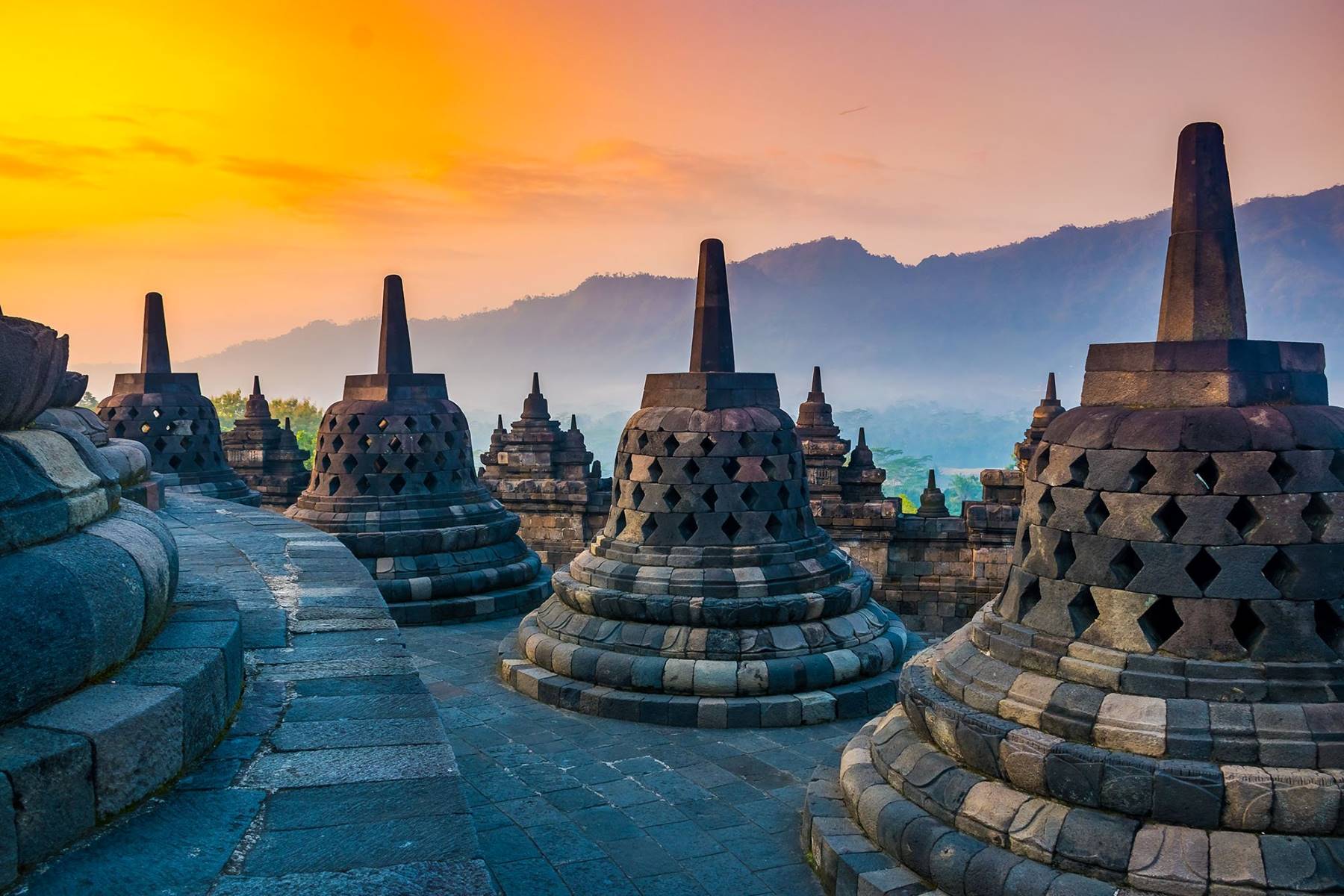
Borobudur is an ancient Buddhist temple located in Central Java, Indonesia. It is considered one of the most impressive architectural masterpieces in the world and has been recognized as a UNESCO World Heritage Site. Built in the 9th century, Borobudur is not only a place of worship but also a symbol of Indonesia’s rich cultural heritage. The temple is renowned for its unique design, intricate stone carvings, and its significance in Buddhist philosophy and teachings. As a popular tourist attraction, Borobudur attracts visitors from all over the world who come to marvel at its grandeur and explore its hidden treasures. In this article, we will delve into eight fascinating facts about Borobudur that reveal the awe-inspiring history and significance of this magnificent landmark.
Key Takeaways:
- Borobudur is a majestic UNESCO World Heritage Site and the largest Buddhist temple in the world, featuring intricate stone carvings and a hidden karmic code, offering visitors a journey towards enlightenment.
- The temple is a marvel of engineering, built without cement, and provides a captivating sunrise spectacle. It holds immense cultural significance, drawing tourists to explore its rich history and spirituality.
A Majestic UNESCO World Heritage Site
Borobudur is a magnificent Buddhist temple located in Central Java, Indonesia. It was built in the 9th century during the Sailendra dynasty and is considered one of the greatest Buddhist monuments in the world. Recognized as a UNESCO World Heritage Site, it attracts thousands of visitors each year.
The World’s Largest Buddhist Temple
Borobudur holds the distinction of being the largest Buddhist temple in the world. Its impressive structure consists of nine stacked platforms, with a central dome at the top. The temple is adorned with intricate carvings and features over 2,600 relief panels, portraying scenes from Buddhist teachings.
Meticulous Stone Carvings
The stone carvings at Borobudur are a testament to the incredible craftsmanship of the ancient architects. These exquisite carvings depict various stories and teachings from Buddhism, presenting a visual narrative as visitors ascend the temple. Each panel is meticulously crafted, showcasing the rich cultural heritage of the region.
Hidden UNESCO Karmic Code
Borobudur is believed to contain a hidden karmic code within its structure. The temple is designed in the shape of a mandala, symbolizing the universe in Buddhist cosmology. The intricate layout and symbolism are said to represent the Buddhist concept of achieving enlightenment through the path of virtue and perseverance. It is an architectural marvel with a profound spiritual significance.
A Marvel of Engineering
Despite its massive size, Borobudur was constructed without the use of any cement or adhesive. The temple was built using interlocking stones, which fit together flawlessly, creating a sturdy structure that has withstood the test of time and numerous natural disasters over the centuries.
A Journey Towards Enlightenment
Borobudur is designed as a pilgrimage path towards enlightenment. The journey begins at the base of the temple and spirals upwards, passing through three levels that represent the stages of human existence – the world of desires, the world of forms, and the world of formlessness. As visitors ascend, they are guided towards spiritual awakening, symbolizing the path to Nirvana.
Sunrise Spectacle
One of the most captivating experiences at Borobudur is witnessing the sunrise from the top of the temple. As the first rays of dawn illuminate the surrounding landscapes, the ancient stone structures are bathed in a golden glow, creating a surreal and magical atmosphere that leaves visitors in awe.
Cultural Icon and Tourist Attraction
Borobudur holds immense cultural significance for the people of Indonesia. It is a symbol of their rich history and religious heritage, drawing pilgrims and tourists from around the world. The site has become a popular tourist attraction, offering visitors a glimpse into the past and an opportunity to explore an architectural marvel steeped in spirituality.
Conclusion
In conclusion, Borobudur is a truly remarkable landmark that holds immense historical, cultural, and religious significance. From its massive size and intricate architecture to its rich symbolism and serene surroundings, Borobudur is a testament to the ingenuity and craftsmanship of the ancient civilization that built it. Whether you are a history buff, an architecture enthusiast, or a spiritual seeker, a visit to Borobudur will leave you awe-struck and inspired. With its fascinating facts and intriguing mysteries, Borobudur remains an iconic landmark and a must-visit destination for travelers from around the world.
FAQs
1. What is Borobudur?
Borobudur is a 9th-century Buddhist temple located in Central Java, Indonesia. It is the largest Buddhist temple in the world and is renowned for its magnificent architecture and detailed relief sculptures.
2. How old is Borobudur?
Borobudur was built around the 9th century, making it over a thousand years old. It was abandoned for centuries and buried under volcanic ash until it was rediscovered and restored in the 19th century.
3. What is the significance of Borobudur?
Borobudur is considered a sacred pilgrimage site for Buddhists and is seen as a representation of the Buddhist cosmos. It is also regarded as a UNESCO World Heritage Site and is a symbol of Indonesia’s rich cultural heritage.
4. How long does it take to explore Borobudur?
On average, it takes about 2-3 hours to explore Borobudur thoroughly. It is recommended to visit in the early morning to avoid crowds and experience the magnificent sunrise over the temple.
5. Can you climb Borobudur?
Yes, visitors are allowed to climb Borobudur. The main stupa at the top of the temple offers panoramic views of the surrounding area. However, visitors are required to respect the temple’s sanctity and follow the designated pathways.
6. Is there an entrance fee to visit Borobudur?
Yes, there is an entrance fee to visit Borobudur. The ticket price may vary for domestic and foreign visitors. It is advisable to check the official website or inquire at the ticket counter for the most up-to-date information.
7. Are there any rules or dress codes to be followed when visiting Borobudur?
Yes, there are certain rules and dress codes to be followed when visiting Borobudur. Visitors are required to wear modest clothing that covers their shoulders and knees as a sign of respect for the temple’s religious significance. Additionally, visitors are not permitted to bring food or drinks inside the temple premises.
8. Can I visit Borobudur as a non-Buddhist?
Absolutely! Borobudur welcomes visitors of all religions and beliefs. It is a site of historical and cultural significance that can be appreciated by people from various backgrounds. Whether you are a Buddhist or not, visiting Borobudur will undoubtedly be a memorable and enriching experience.
Was this page helpful?
Our commitment to delivering trustworthy and engaging content is at the heart of what we do. Each fact on our site is contributed by real users like you, bringing a wealth of diverse insights and information. To ensure the highest standards of accuracy and reliability, our dedicated editors meticulously review each submission. This process guarantees that the facts we share are not only fascinating but also credible. Trust in our commitment to quality and authenticity as you explore and learn with us.


